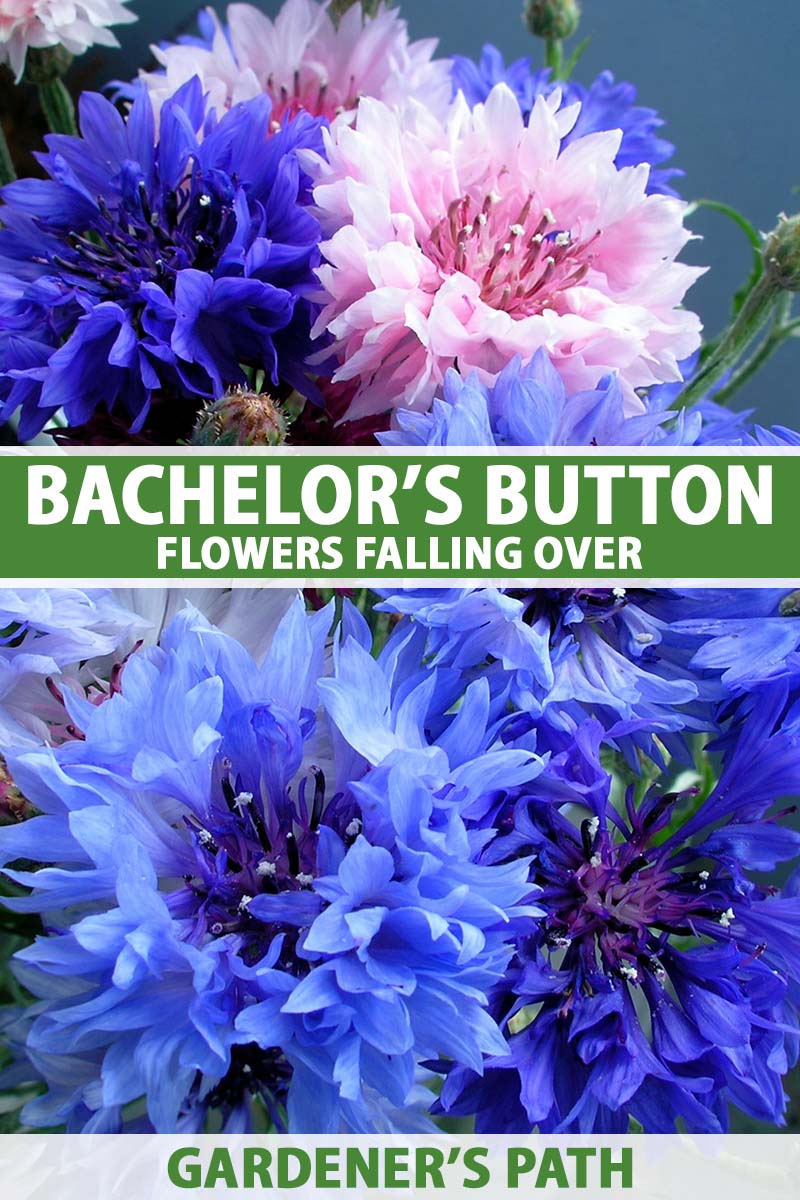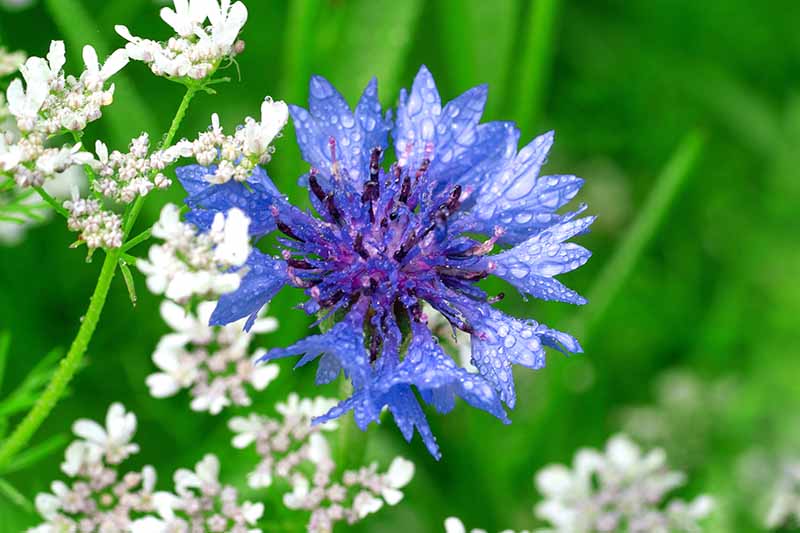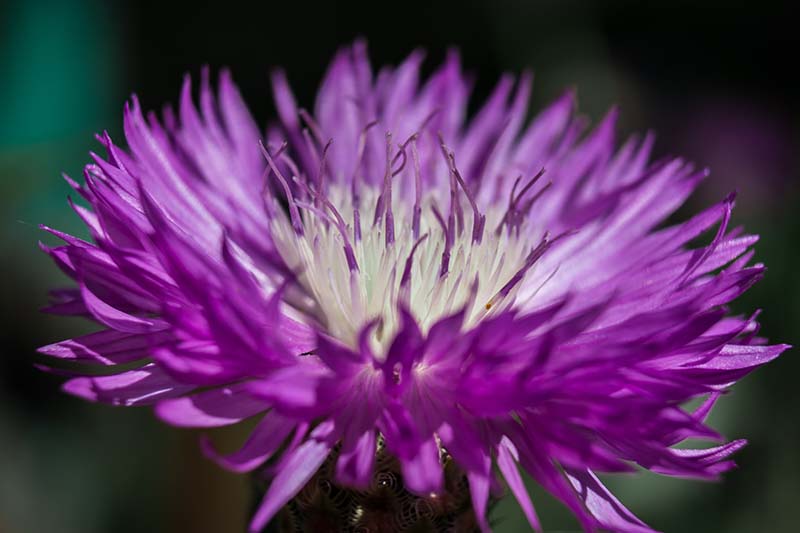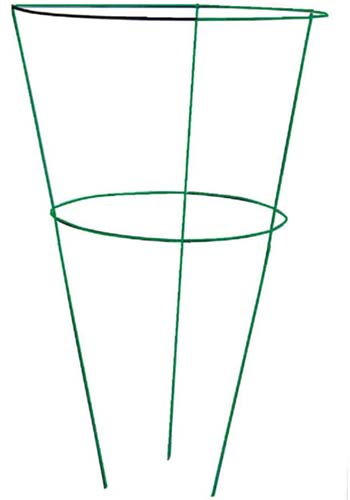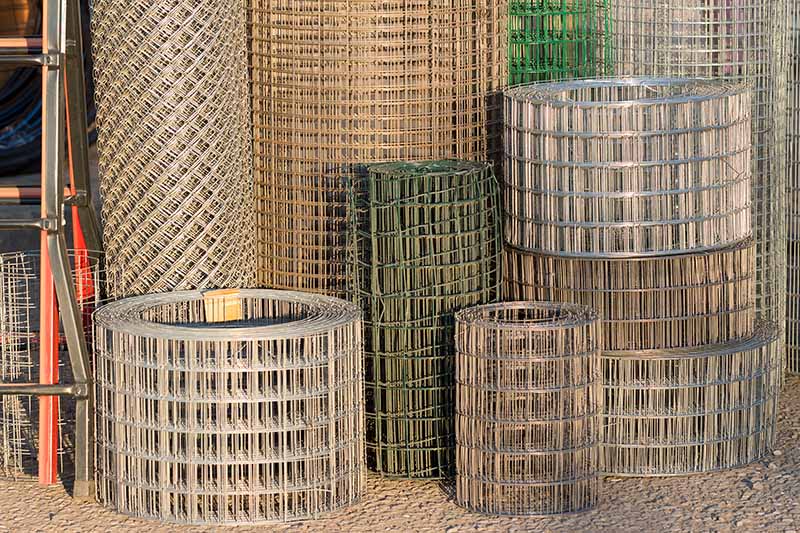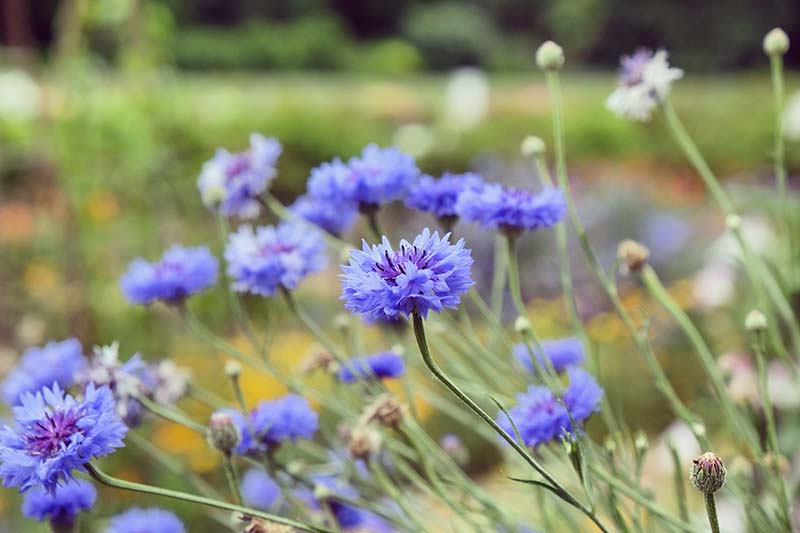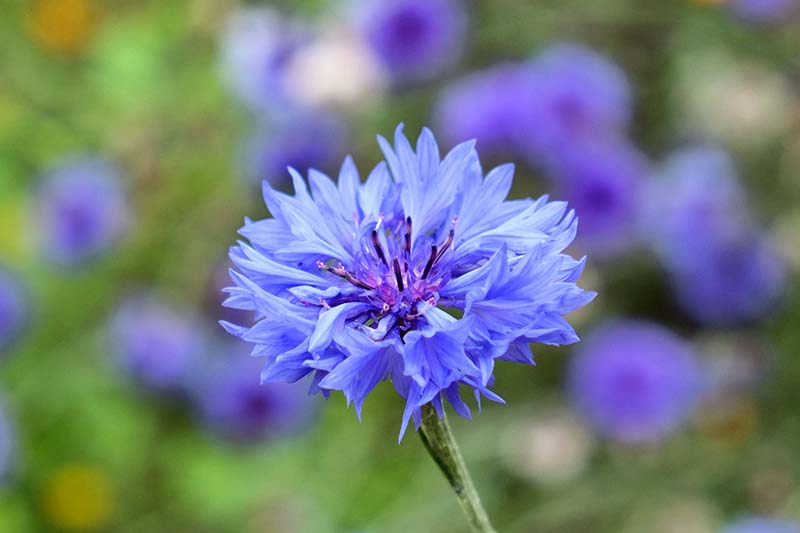Bachelor’s button flowers (which are technically what is known as an inflorescence), are frilly and vibrant. While their original color was a vivid blue, you can also find them today in pink, lavender, purple, and white. When cornflowers – as they are also known – are in bloom, they make a truly stunning sight. That’s why it’s so darn frustrating when you can’t enjoy the blossoms because they simply won’t stay upright. We link to vendors to help you find relevant products. If you buy from one of our links, we may earn a commission. Here’s what’s to come:
Why Do Bachelor’s Button Flowers Fall Over?
If your bachelor’s buttons are falling over, there’s a good chance it’s simply because the heads are too heavy for the stems of the plant to hold up. But even strong stems might be overwhelmed after heavy rain or strong winds. Those big, beautiful blossoms are gorgeous in full bloom, but when the petals collect water from rain or overhead irrigation, a strong wind comes gusting along, or if the plants simply didn’t grow strong enough stems, those flowers can tumble over. This is especially common with some of the modern cultivars that have particularly massive heads with double blossoms. Less often, you might run into other environmental conditions and diseases that can cause the leaves and the stems to fall over. However, if it’s just your blossoms that are bending, it’s pretty safe to assume that it isn’t a disease that’s causing the problem. (Phew!)
How to Fix the Problem
The solution to bachelor’s button flowers falling over is to prop them up. Easy, right? And there are lots of ways to do this. It helps to put the frames in place when the plants are small or before you sow seed. That way, the foliage and flowers can grow up and around the cage without being disturbed. Keep in mind that you might need to use several cages to keep a large bed of cornflowers upright. Plant Support Frames If you decide to go this route, you can pick up a pack of five peony frames at Home Depot. Instead of opting for frames, I like to prop up green wire fencing about nine to eighteen inches above the ground when I seed a wildflower bed. The height I choose all depends on the mature height of the plant, so check the details for the variety that you plan to grow. As the flowers grow up and through, the flowers receive additional support, and the fencing becomes completely covered by the foliage so you can’t even see it. As a bonus, this protects the base of the plants from marauding rabbits as well. To build the frame, I sink a series of wood stakes around my planting bed. Then, I drape the wire over the stakes and down the sides, forming a fully enclosed box. Staple the wire in place so it’s attached to the stakes. Use wire fencing that has a wide mesh. Something with two-by-four-inch openings is ideal. You can leave this in place for years and just toss some new seed into the bed each spring. The downside is that you’ll have to lift the wire to weed or mulch. You might also be able to encourage your bachelor’s buttons to lift their pretty heads by gently shaking them, to knock any pooled water loose. If you don’t feel like going to the trouble of supporting them and giving them a shake doesn’t do the trick, just snip the flower heads and put them in vases for display in your home. Bachelor’s buttons make gorgeous cut flowers. If you’ve struggled with falling flowers in the past, there are also steps you can take to try to prevent this from happening again. Here’s a tip I learned over the years: Bachelor’s buttons tend to grow best when you plant them from seed. I’ve had far fewer problems with flowers falling over when I grow from seed than when I transplant purchased plants. We have an entire guide that will help you save seeds from your existing plants to put in the ground next spring. Give it a read, if you’re interested! In the future, you can also try planting in an area that is protected from strong winds. Finally, try planting in a sunnier spot if you have your flowers growing somewhere that is partially shady. Plants that aren’t receiving as much sun as they prefer can become leggy, which can cause the stems to grow too long and thin to support the flower heads.
Wilting vs. Falling Over
Most of the time, when your bachelor’s buttons fall over, it’s because the tops are just too heavy for the stems. But just to be sure, check to see if the plant is wilting instead, and if this is what is actually causing the heads to fall to the ground. A plant that is wilting will be limp all over, from the stems to the leaves and the flowers. If you find this to be the case, give your plant some water to see if that helps. These plants are prone to wilting when they become too dry. Diseases like bacterial wilt and downy mildew can also cause wilting. However, if it’s just the stems with the flowers on top that are falling over, you can safely assume it’s just a heavy flower head-type situation you’re dealing with rather than wilting. No more blossom woes for you, though. Now you know how to get your plants to stand tall! I’d love to hear about your growing adventures. What method did you end up using to prop your plants up? Hopefully, this guide answered all of your questions. If so, you might be ready to move on to learning more about some other flowers in the Asteraceae family, starting with these:
How to Grow Pot Marigold (Calendula) FlowersGrow New England Aster for Sensational Summer and Fall ColorAdd Harmony to Your Garden with Cosmos
